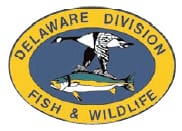

DOVER, Delaware –-(Ammoland.com)- The fawning season for white-tailed deer in Delaware has begun, with most fawns born during the last week of May through the first week of June.
With the season’s onset come the inevitable calls to DNREC’s Division of Fish and Wildlife about “abandoned” fawns, and how “doing the right thing” means “saving” these newborns by bringing them home or to a wildlife rehabilitator.
Actually, that’s the wrong thing to do, according to DNREC wildlife biologist Joe Rogerson:
“There are facts about wildlife that people who remove fawns from the field may not realize,” he said. “First and foremost, the fawn hasn’t been ‘abandoned’ at all.
“So even if a fawn appears to be alone, the mother is likely bedded close by. Newborn fawns need to feed every few hours so the doe never strays far,” Rogerson said. “Fawns don’t become active enough to start traveling with their mothers until they are about two months old, so the survival instinct of a newborn fawn is to stay very still and ‘hide’ from predators.”
Furthermore, research has shown that many fawns cared for by people have a greatly decreased chance of survival once they are released back into the wild, compared to deer raised by their mothers. Fawns raised in the wild are able to learn survival instincts from their mothers that people simply cannot teach them.
Not only is removing a fawn from its hiding place not in the animal’s best interest, it is also illegal for an individual in Delaware to possess a live white-tailed deer. If found guilty, such an offense is punishable by a fine not less than $250, nor more than $1,000, plus the costs of prosecution and court costs; the person may also be fined and faces up to 30 days in jail. In addition, any deer held illegally in captivity will be removed by the Division.
“The bottom line is, if you really care about the fawn and its well-being, please leave the animal alone. Its mother will soon return and the animal will have a far greater chance at survival than if you take it home,” Rogerson added.
For more information about fawns or Delaware’s white-tailed deer, please contact Joe Rogerson, DNREC Wildlife Section, at 302-735-3600.
What about other young animals?
In late spring to early summer each year, volunteer wildlife rehabilitators are kept busy by well-meaning people who spot young wild animals, assume they are abandoned and pick them up. Most of the time, they are mistaken.
“In almost every case, these animals should be left where they are found,” said licensed wildlife rehabilitator Dawn Webb. “While you may see a baby animal alone, what you don’t see is its mother, who is most likely nearby and waiting for you to move on.”
Wild animals should never be taken from the wild unless you are certain they are injured or orphaned. This occurs mainly when their parents are killed or gravely injured; young animals may also become separated from their parents due to habitat changes or disruptions caused by human activity.
Webb cited two precautions to take with wild animals: 1.) If you handle any wild animal, wear gloves. 2.) If you find a young injured or orphaned wild animal and have questions, call a wildlife rehabilitator. She also offered some additional tips for dealing with baby wild animals:
If you see a young animal alone, keep pets and children indoors and watch from a distance for a period of time to see if its mother returns. Eastern cottontail rabbits, for example, build shallow nests on the ground, bear their young, cover them and move away to avoid attracting predators, returning only to feed them.
Baby birds that are not old enough to fly can be returned to their nests. Look around for the nest near where the bird was found and carefully put it back in.
If you see baby birds that have left the nest, their parents will continue to feed them regularly outside the nest, and you should not interfere. Again, keep pets and children away.
If you find an injured or orphaned young wild animal that must be temporarily moved, place it in a sturdy box lined with a towel, put the box in a quiet, dark place, and call a wildlife rehabilitator.
Always use extreme care with injured animals. Wild animals in pain are unpredictable and can be dangerous. They also can carry parasites or illnesses that can affect you or your pets, such as rabies.
Remember that it is illegal to raise or keep any wild animal in Delaware. Only licensed wildlife rehabilitators are permitted to keep injured or orphaned wild animals – and they are trained to care for them.
“The hard truth is, if you take a young animal from the wild, you are almost certainly ensuring its death,” Webb said, noting inappropriate diet and improper care are factors, in addition to the fact that wild animals cared for by humans do not learn the survival skills they must have to live in the wild. “The bottom line is, if you care, leave them there,” she added.
For more information on wildlife, please call the DNREC Wildlife Section at 302-739-9912. For more information on wildlife rehabilitators in Delaware, including a current list of volunteers, visit the Delaware Council of Wildlife Rehabilitators and Educators website at http://www.dewildliferescue.com/.
The post What You Should Know & SHOULD NOT Do If You Find An “Abandoned” Young Wild Animal appeared first on AmmoLand.com.
